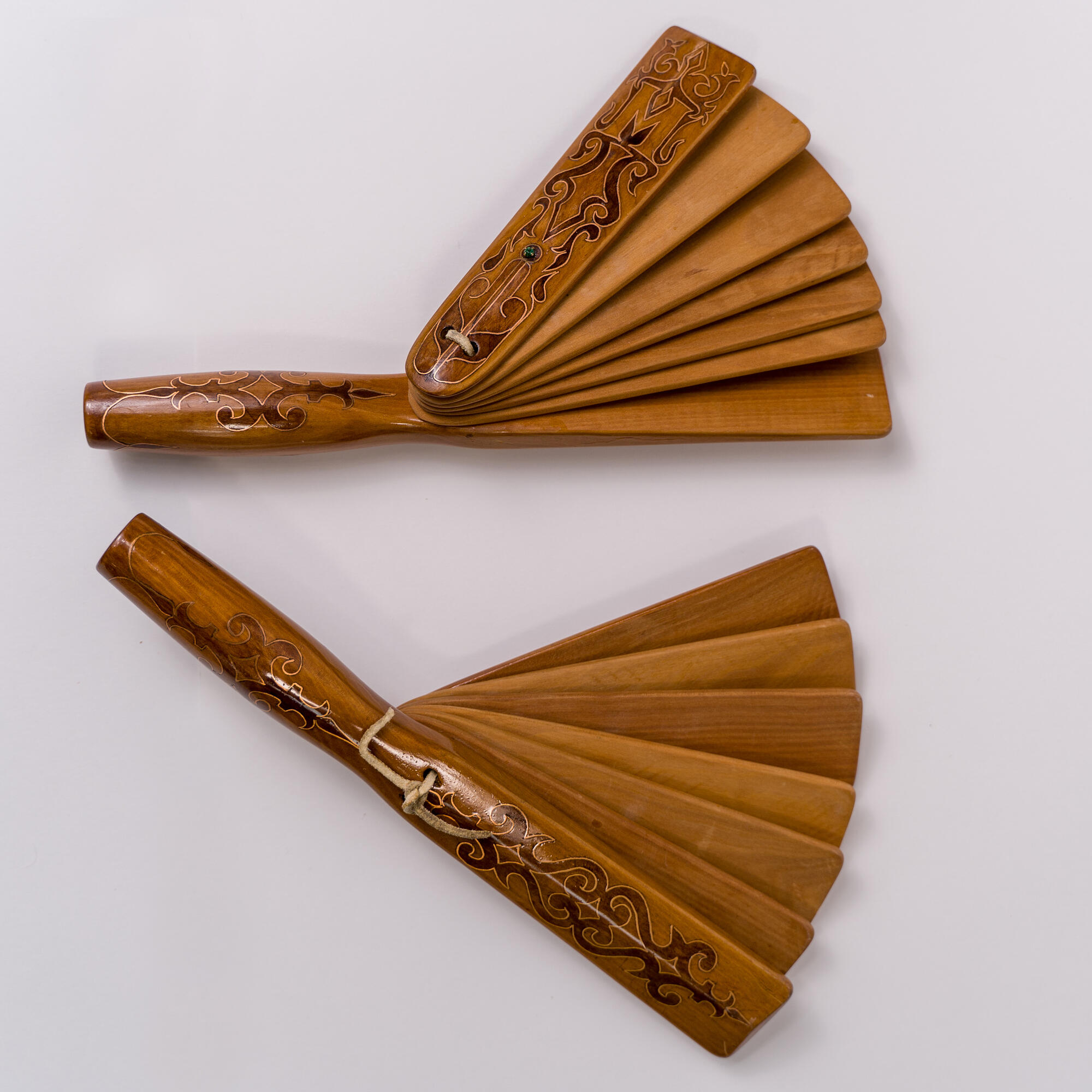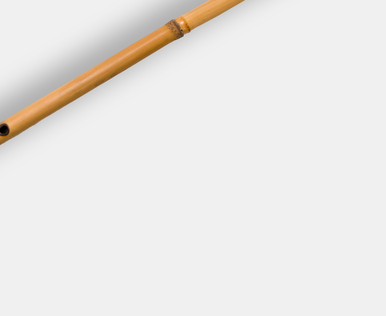Hand-rattles are a percussive musical instrument beloved by the Adyghe and a staple of any holiday. Not only do they keep the pace steady but also inspire dancers with their fervent beat.
Rhythmic Adyghe folk dances are accompanied by the sound of an ancient musical instrument. Hand-rattles set the rhythm of the song and the movements of the dancers. They sound like the clatter of a horse’s hooves — a sound that is near and dear to the dashing Adyghe.
The design of hand-rattles is simple, but making one requires skill, which fathers pass to their sons. Rattles consist of several thin dried boards. They are strung together with a strap-loop, which is also used to hold the instrument as it is wrapped around the performer’s hand.
The instrument consists of 3, 5 or 7 well-dried thin boards, which are 10–17 centimeters long and 5–10 centimeters wide. They are loosely tied at one end with a thin but strong strap to the board with the handle. The total length of the instrument is 30–35 centimeters.
Previously, rattles were made from soft types of wood. Nowadays these instruments are made of hardwood: ash, chestnut, plane trees, hornbeam, boxwood. In the past, when making hand-rattles, the craftsmen richly decorated them with silver, niello, gilding and decorative patterns. Contemporary craftsmen also try to follow traditions of the past. Only men are allowed to make hand-rattles.
To play hand-rattles, one not only needs an innate sense of rhythm, but also good physical strength, so it is customary for men to play them. On holidays, folk festivals, hand-rattles accompany Adyghe versions of violins, flutes, and other musical instruments. Tourists bring back hand-rattles as souvenirs from their trips to the Republic of Adygea.
The hand-rattles on display in the Adygeysk Museum of Local Lore have seven boards. They were made by Mira Hadzhimetovna Stash — a woodworker from the Gabukai village and a resident of Adygeysk. On the handle at the bottom there is an inscription: “Adygeisk 1995 Mira”. The top and bottom boards are decorated with a traditional Adyghe decorative patterns.



